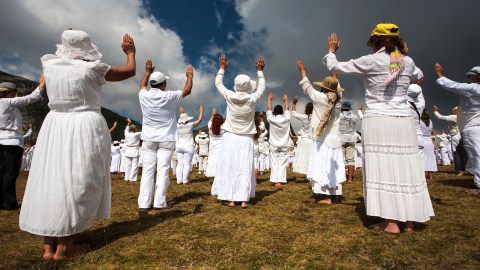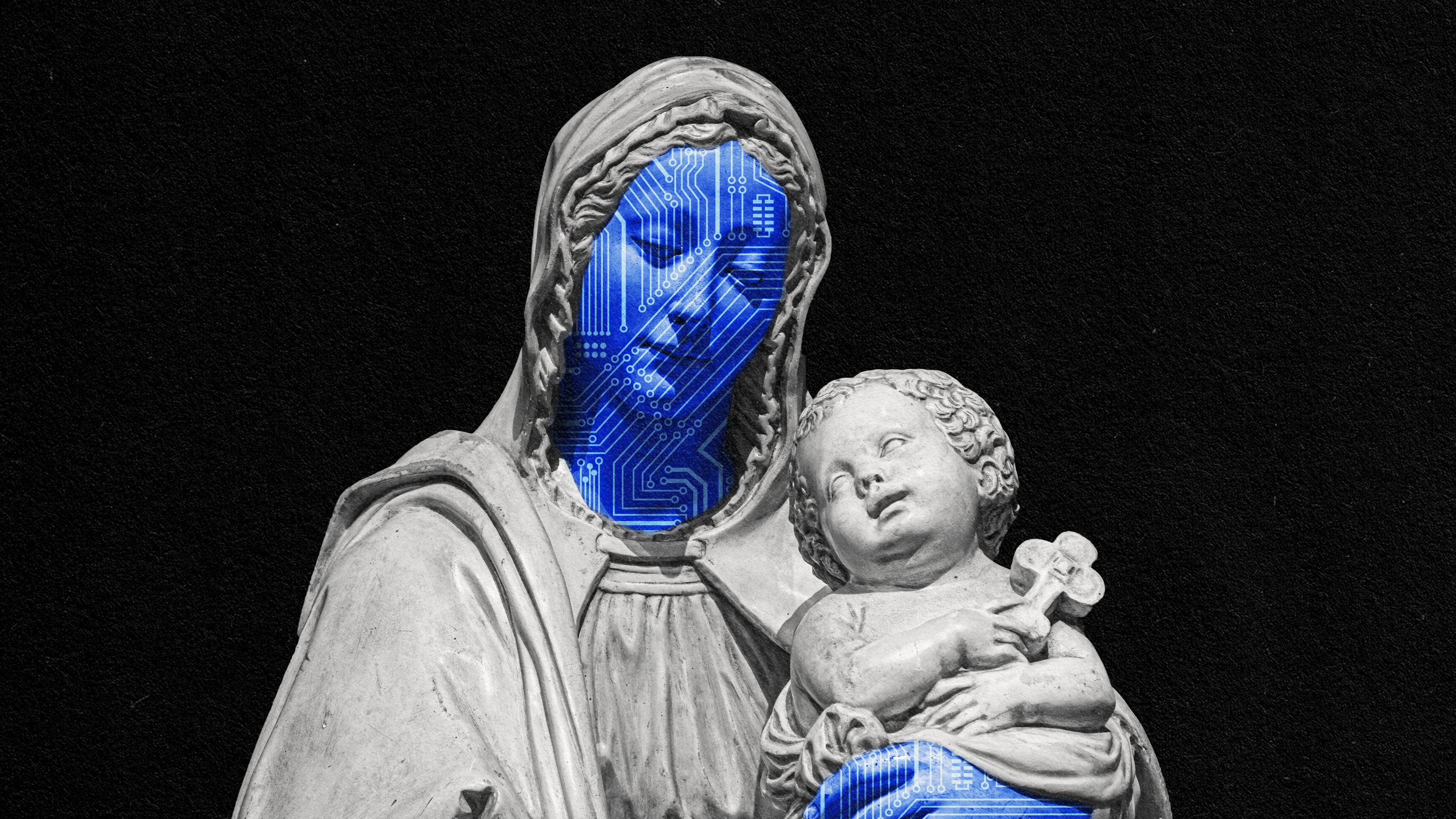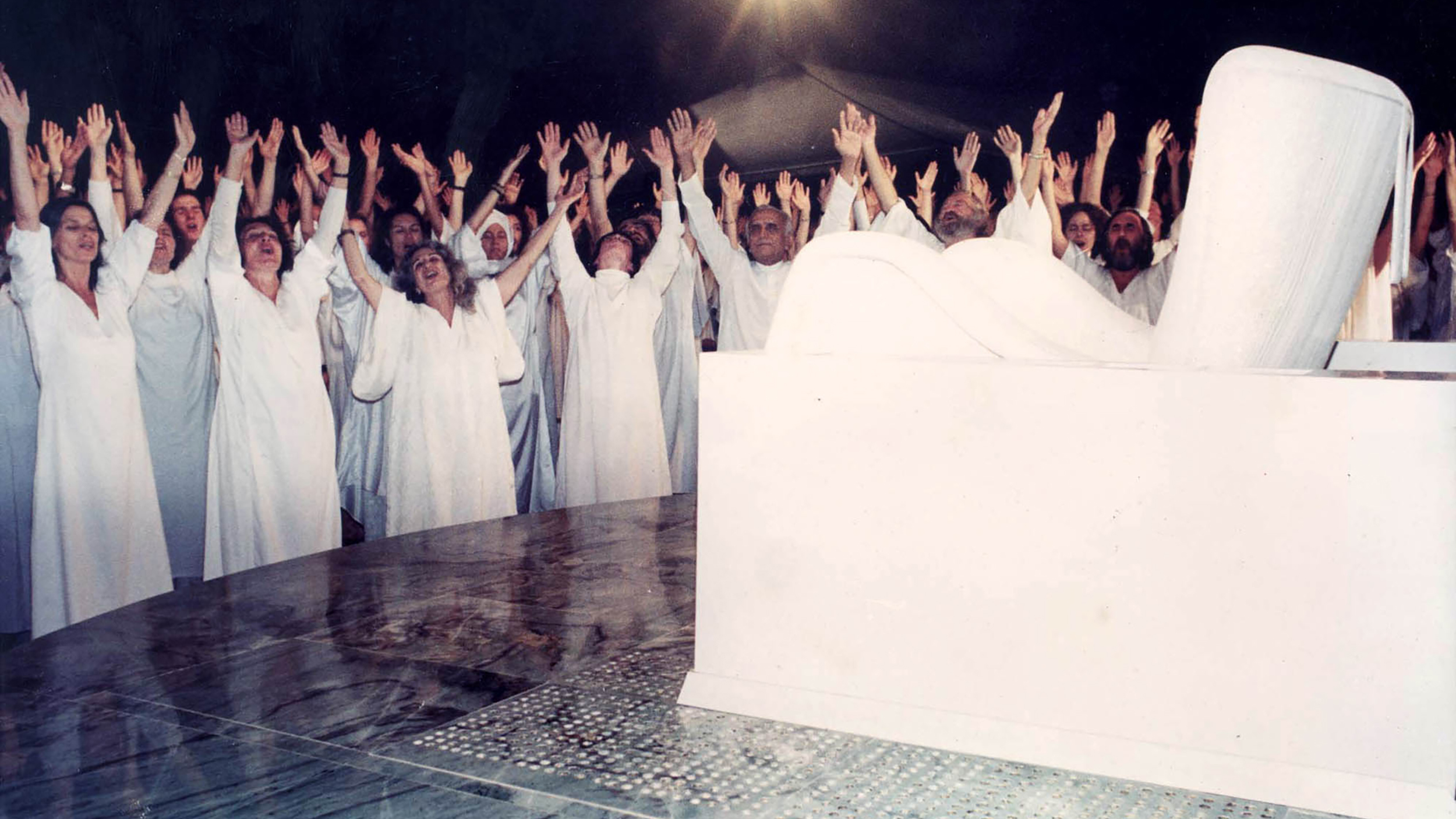Are religions simply cults that have gone mainstream?

- The word “cult” often holds a negative connotation and is reserved for the unconventional religions we disapprove of.
- Cults are defined by charismatic leaders, traditions of secrecy or exclusivity, and toxic relationships or behaviors.
- Today’s religions maintain cult-like elements, but they are generally more open and try to minimize toxic behaviors.
How would you feel if your next-door neighbor was in a cult? What if your son or daughter came home to inform you they had joined a “community of like-minded people”?
In 2004, the theologian Paul Olson interviewed 2,400 randomly selected Nebraskans about how comfortable they would feel if their neighbor joined a cult or a new Christian church. More than 80% of respondents said they’d feel uncomfortable about living next door to a cultist, compared with only 6.1% disapproving of a new Christian church. It’s easy to imagine how they’d take the news coming from their child.
Olson’s aim was to show what sociologists have argued for some time: The word “cult” is laden with negative connotations. It’s used to denigrate and slander belief systems or wheeled out whenever some strange, secretive group is brought to light.
The historian J. Gordon Melton has even argued that cults are defined by illegitimacy; what we call a cult is a cult only if we disapprove of it and believe it to be beyond “proper” religion. And he has a point. At first blush, there is little separating a standard, organized religious group from a cult. Both demand metaphysical commitments, both involve some kind of leader or prophet, and both have followers of varying sizes.
However, theologians and sociologists still use the word cult to define groups with a few common (if not exclusive) elements. Here we look at those elements and ask, “Were today’s religions once cults, and are they still?”
Charismatic leaders or founders
Hare Krishna had Bhaktivedanta Swami, the Manson Family had Charles Manson, and the People’s Temple had Jim Jones. Theologically, the three leaders are worlds apart. In terms of personality, they are cut from the same charismatic and personable cloth. They rallied supporters and provided the backbone necessary to grow and sustain their cults through those hard, early years.
But Jesus too was an archetypal charismatic leader. He gathered disciples and drew crowds of listeners. John Calvin (Calvinism), John Wesley (Methodism), and George Fox (Quakers) were all erudite and persuasive, and their sectarian rifts were successful largely on the back of their personal gravity. Similarly, the Buddha, Mohammed, and King David were all documented as charismatic individuals. The sociologist Max Weber even argued that charisma was an essential requirement for authority and legitimacy. Without a leader’s charisma, a religious movement would lack any legitimacy.
Today, though, the individual charisma of religious leaders is not as important as a cult leader’s. Muslims do not go to a mosque because their imam knows how to write a good khutbah. Christians will often go to church in spite of a dreary, droning deacon. Modern religions do not rely on charisma; they rely on faith and dogma.
A tradition of secrecy or exclusivity
The cult of Mithras, a rival to early Christianity, met in underground temples known as Mithraea. Its members had secret handshakes and held cloistered feasts. Archeologists have found evidence of “ordeal pits” for initiates, which might involve burning, freezing, or a beating. Beyond that, historians don’t know much about the cult of Mithras because antiquity has left them little to go on but lurid speculation and scandalized anti-cultist propaganda. That’s partly because cults are defined by their secrecy.
Christians, fearing persecution, held clandestine masses in private houses for centuries. Their holy books and practices were as varied as the various pockets of groups. In fact, Paul’s letters were specifically designed to establish orthodox practices for all Christendom.
Islam and Judaism also began as exclusivist groups in defiant rejection of the existing order. Mohammed was an Ḥanīf — a “renunciator” who rejected both existing Abrahamic faiths and Arab polytheism. Yahweh was once considered another god — a warrior god, no less — to rival other groups. Later in the 15th century, Guru Nanak rejected both Hindu and Muslim orthodoxy and so founded Sikhism.
However, with the possible exception of Scientology (which is on the cult-religion border), it is not accurate to describe today’s religions as secretive and cloistered. Christianity was forced behind closed doors because of occasional bouts of Roman persecution Yet, Islam and Buddhism openly proselytized. They proudly, and sometimes forcibly, sought converts.
Yes, today’s religions maintain secrets; the Vatican contains a Dan Brownian library of mysteries, and Daoism embraces enigmatic riddles called the Koan. But organized religion is very open. It’s mainstream and everywhere. Even your neighbor might be religious!
Toxic relationships and behaviors
The reason we often imagine cults as bad is that they often involve masochistic practices, dangerous initiation rituals, or harmful psychological tricks. Rapture cults have been known to encourage suicide and use torture.
Then again, it’s no difficult task to point to the myriad of toxic behaviors that world religions have, at one point or another, endorsed or imposed on their followers. Christian Puritans who whip themselves, Jains who starve themselves to death, and female genital mutilation are all examples where theology has been used to harm believers. If we extend “toxic” to include sexual and physical abuse by religious leaders, then we have millennia’s worth of data to prove the point.
There are two ways to resolve this. Either we say that cults are not defined by toxic behaviors, or we argue that religions have cultish elements — elements that ought to be purged. But this, in turn, opens up a whole new can of theological worms. While your local church might not gather around a Mithraean ordeal pit, all major world religions do encourage an element of ordeal in holy rites, such as fasting or pilgrimage.
The question becomes one of degree. Cults involve initiation rites that scar and punitive practices that maim. They often demand of their followers a wholesale and absolute psychological dependency. Cults brainwash and manipulate. Religious practices can also brainwash and manipulate individuals, but if we are to salvage the word cult at all, perhaps we must identify those behaviors as cult-like while maintaining that the religion itself is not.
Failing that, we might have to agree with George Melton. Cults are simply the religions we don’t like.





